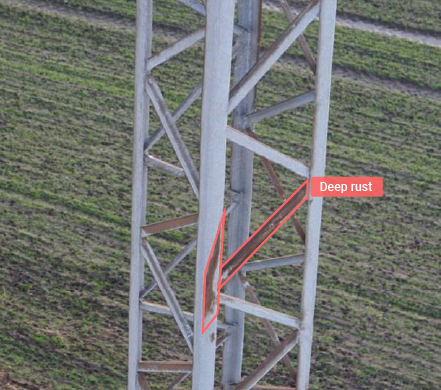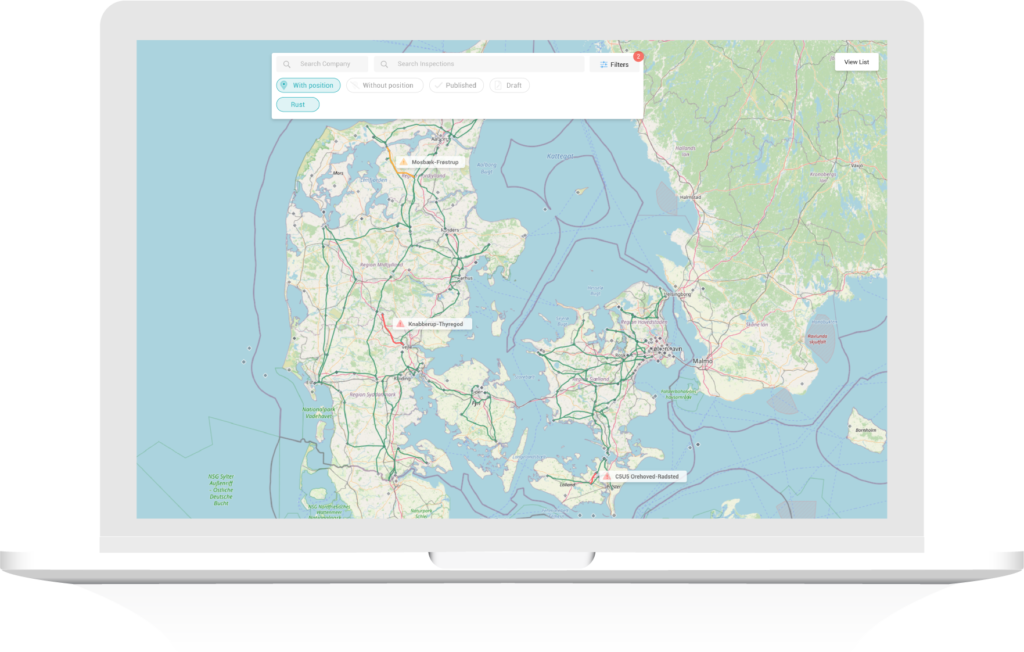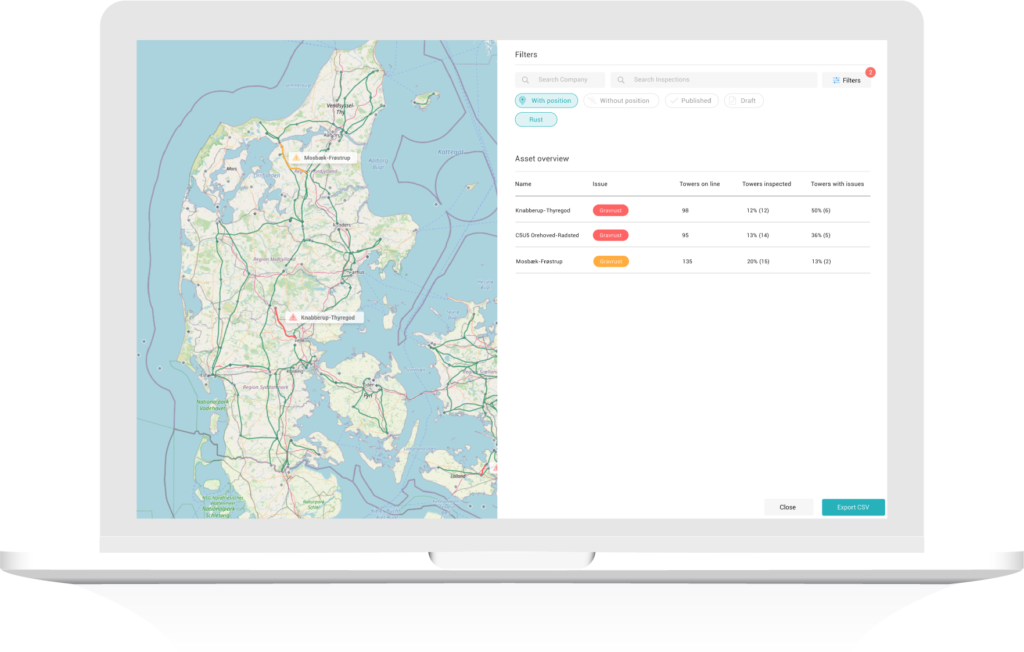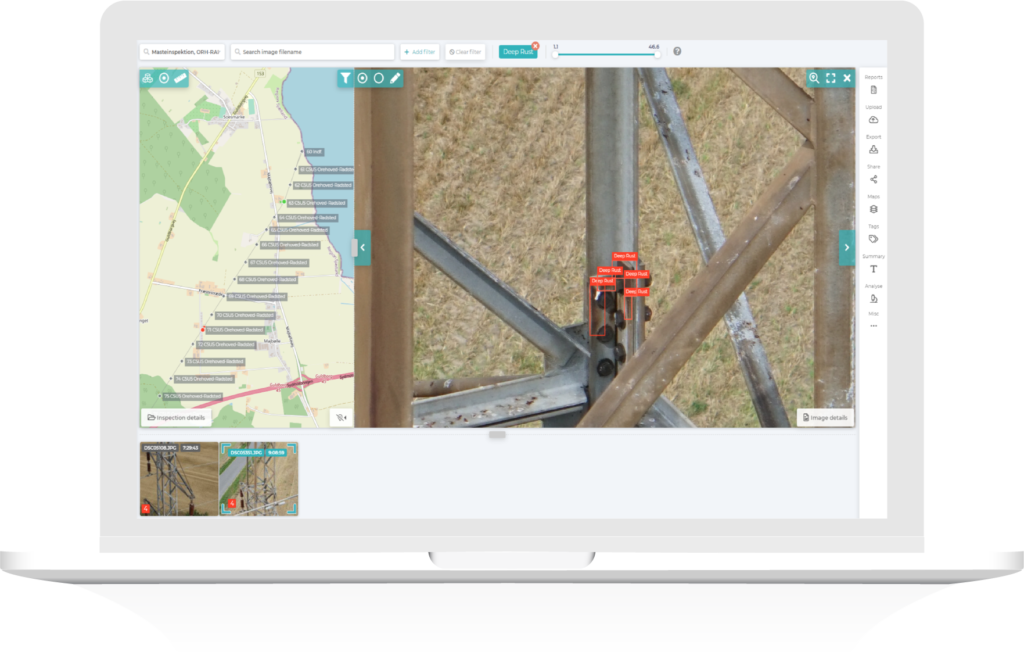A solid foundation. How a large utility deploys AI for rust detection.
Energinet wants to transition from manual labor to automation, and it all starts with one rust-detection algorithm.
by Ditte R. Lønstrup
Energinet wants to transition from manual labor to automation, and it all starts with one rust-detection algorithm.
In 5 years, all will be different.
If the past 5 years have brought changes to the utility industry, it is nothing compared to the development we’ll see in the 5 to come. Energinet, Denmark’s largest utility, is preparing for climate changes along with a changing digital climate. They want to transition from manual labor to automation, and, as Kenneth Nørup Knudsen, Team Leader and Senior Specialist at Energinet cemented: “it all starts with one rust-detection algorithm.”
Energinet, like utilities are most, is built on tradition. New technology has never had its first point of entry here. But things are changing at Energinet. In the past few years, cutting edge technologies have been introduced at an increasing rate, starting in 2014 with inspection drones.
In 2020, Energinet flew more than 3.000 kilometers of line by helicopter, and 150-200 towers by drones. At approximately 100 images per tower, that amounts to more than 20.000 pictures captured. Pictures that need to be stored, organized, and analysed – all manually. And, they’re likely to see even more imagery added to the pile in the coming years.
Many of Energinet’s towers are reaching end of lifetime. Their biggest issue is rust; both surface- and deep-. In order to extend the lifetime of their lines, Energinet needs to find affected areas, and evaluate how to best prioritize their resources. This is where AI comes into play.
“These algorithms that we’re training are going to answer some pretty complicated questions.” Says Ken Falk, CEO & Founder of Scopito, the company developing AI solution for Energinet. “Not only will they have to detect and categorize rust, but also evaluate which towers should be prioritized first.”
The algorithms first task is to identify areas where rust is present, by looking at inspection images.
Today, overflight images are captured from a helicopter to keep the data-load to a minimum, but once the algorithm is ready, Energinet plans to add a significantly more cost-effective fixed-wing drone. This hasn’t been possible earlier, due to the massive amount of data it would produce, which would be too much for a human to handle. However, once they have the algorithm processing images, that won’t be a problem for Energinet.
Once rust is identified, the algorithm must prioritize which areas of the line should be addressed first. If the rust at a certain stretch is too severe, it might be more beneficial to focus on a part of the line, that has a higher chance of being repaired. Several factors play a role in this evaluation, and getting it right is crucial to extending the lifetime of Energinet’s assets.
Once problematic areas are identified and prioritized, multi-rotor drones are dispatched to capture detailed imagery of the towers. On average, each drone captures 100 images per tower, and with 150 – 200 towers inspected each year, that amounts to more than 20.000 images of towers alone.
The second task is categorizing the rust found on the imagery.
Ken Falk, Scopito, points out, that this task is the most complicated, as rust is very difficult to categorize. It starts as surface rust, and gradually grows to become deep rust. In between are an undefined number of stages, each of which can be very difficult to recognize from the outside. The number of categories needed depend on a variety of factors, from the accuracy of the algorithm, to the resources Energinet’s maintenance team has available.
“It’s a task even professionals can disagree on the results of.” Says Ken Falk, Scopito. His team is working their way through Energinet’s dataset, identifying, and labeling the different degrees of rust, consulting with Energinet linemen to reach the most accurate results. They are expecting the algorithm to have an accuracy of 90% or above, once the three-month initial training period is over. From there, the accuracy will increase with the amount of data processed.
Conservatively speaking, an algorithm can analyse around 1.000 images/hour, as opposed to an optimistic 175/hour for a lineman. This means a significant increase in speed. Another advantage of the algorithm is the absence of distractions, which can easily lead to errors for linemen.
“It will be interesting to see if the algorithm will be better at correctly categorizing the rust than it’s human colleagues. We assume it will, because it will be impartial and not affected by any outside factors, but there is no way of knowing until the operation is running.” Says Ken Falk.

Energinet has been working with Scopito’s visualization platform since 2014. The teams have kept a close relationship throughout the years, and when Energinet heard that Scopito was dabbling in AI, they decided to see if there was a possibility for collaboration.
“It made sense for us to work with Scopito on this, as the software is already an integral part of our workflow,” says Kenneth Nørup Knudsen, Energinet.
The project will run for a year, out of which the first three months will be dedicated to training the algorithms and developing the right “view” for the data in Scopito. If all goes to plan, Kenneth Nørup Knudsen, Energinet, believes this is just the beginning of what the companies will do together in terms of fault-detecting algorithms. As he says with a grin: “If it can detect rust, it can detect anything.”
As for Scopito, the project aligns well with the overall vision of the company to ‘Enable the future of visual inspections’. A vision they believe is unachievable without Artificial Intelligence on their side.
“We are working on a handful of these pilot projects with AI right now. It seems like, after standing still for a while, the AI-industry has finally started to move, and we are starting to see concrete results.” – Ken Falk.
Kenneth Nørup Knudsen, Energinet, who has worked with Scopito since 2014 say he is expecting the result to be “simple, straightforward, and visually appealing as we know from Scopito today.”
Besides the AI development, Scopito is also building a new view for the data in their platform. With 100 images per tower, and up to 300 annotations on each tower, the overview is easily lost, explains Ken Falk.
His team of developers are working on a way to present both the overview of the line, and each individual pole as clearly as possible. The focus is on usability above all.
Kenneth Nørup Knudsen agrees that good results are not worth much, if they’re missing the overview: “Scopito works really well for our team because of the simplicity. We as a group, are experts on overhead lines, not advanced computer programs. We need it to be simple and straight forward or we won’t have any use for it.”

These are mock-up’s of the visual representation in Scopito. There may be minor deviations in the final product.


AI-algorithms can drive positive changes for your businesses as well.
Reach out to our experienced team, to learn how.
Energinet is the Danish national transmission system operator for electricity and natural gas. The company has 1150 employees and operates 400 kV electricity transmission grid, as well as 132kV and 150kV power grids.
Energinet’s social mission is to convert the energy system to renewal energy, ensuring all citizens and businesses equal access to a secure and reliable supply at an affordable price.
More content from us
Enter your details below to continue
First and last name is missing.
Company name is missing.
Phone number is missing.
Email is missing
I have read the Terms of Use and declare that I agree
Missing accept for our Terms of Use
Please send me occasional e-mails about the product.
14 Days free trial starts automatically when you sign up